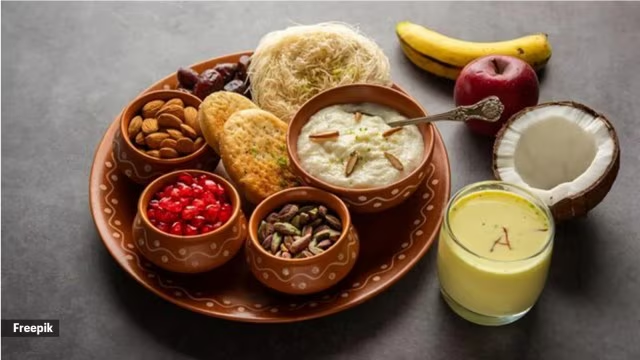07 June 2024 Punjab Khabarnama : The on-year cost of a representative, home-cooked vegetarian thali rose by nine per cent and non-vegetarian thali declined by seven per cent in April 2024, CRISIL M&A Research said.
The cost of the veg thali increased owing to a surge of 39 per cent, 41 per cent and 43 per cent on-year in the prices of tomato, potato and onion, respectively, largely because of the low base of last fiscal, Crisil said.
“Lower onion arrivals on account of a significant drop in rabi acreage coupled with a decline in potato arrivals on account of the adverse impact of late blight and crop damage in West Bengal contributed towards the increase in prices,” it said.
“A dip in acreage, resulting in subdued arrivals, led to a 13 per cent on-year increase in the price of rice (accounting for 13 per cent of the veg thali cost), while lower reservoir levels impacted production of pulses (accounting for 9 per cent of the veg thali cost) leading to a 21 per cent increase in prices on-year,” Crisil said.
On the contrary, prices of cumin, chilli and vegetable oil fell 37 per cent, 25 per cent and 8 per cent, respectively, preventing a further increase in the cost of the veg thali. The decline in the cost of the non-veg thali can be attributed to an estimated 16 per cent drop in broiler prices on-year on a high base of last fiscal on-month, however, the cost of the veg thali edged up 1 per cent and non-veg thali inched lower by 1 per cent, Crisil said.
The cost of the veg thali rose marginally on-month, largely owing to a 9 per cent increase in potato prices, while the cost of other major components broadly remained flat. The cost of the non-veg thali decreased as prices of broilers, which account for 50 per cent of the cost, declined an estimated 2 per cent on a high base, Crisil said.
The average cost of preparing a thali at home is calculated based on input prices prevailing in north, south, east and west India. Monthly change reflects the impact on the common man’s expenditure. The data also reveals the ingredients (cereals, pulses, broilers, vegetables, spices, edible oil, cooking gas) driving changes in the cost of a thali, according to the rating agency.
Male agricultural workers in rural areas got an average daily wage of Rs 323.2 in India in 2022, according to RBI data. If they work for 20 days in a month, their monthly income will be around Rs 13,000 for two persons. If there’re two earning members in a household, 70 per cent of the wages will go towards preparing the vegetarian thali (both lunch and dinner) for the month. Expenses towards education, health, clothes, travel and energy will have to come from the balance 30 per cent. Households will have to compromise on the quality and richness of the daily meal and cut down food expenses to keep the family budget under control.

